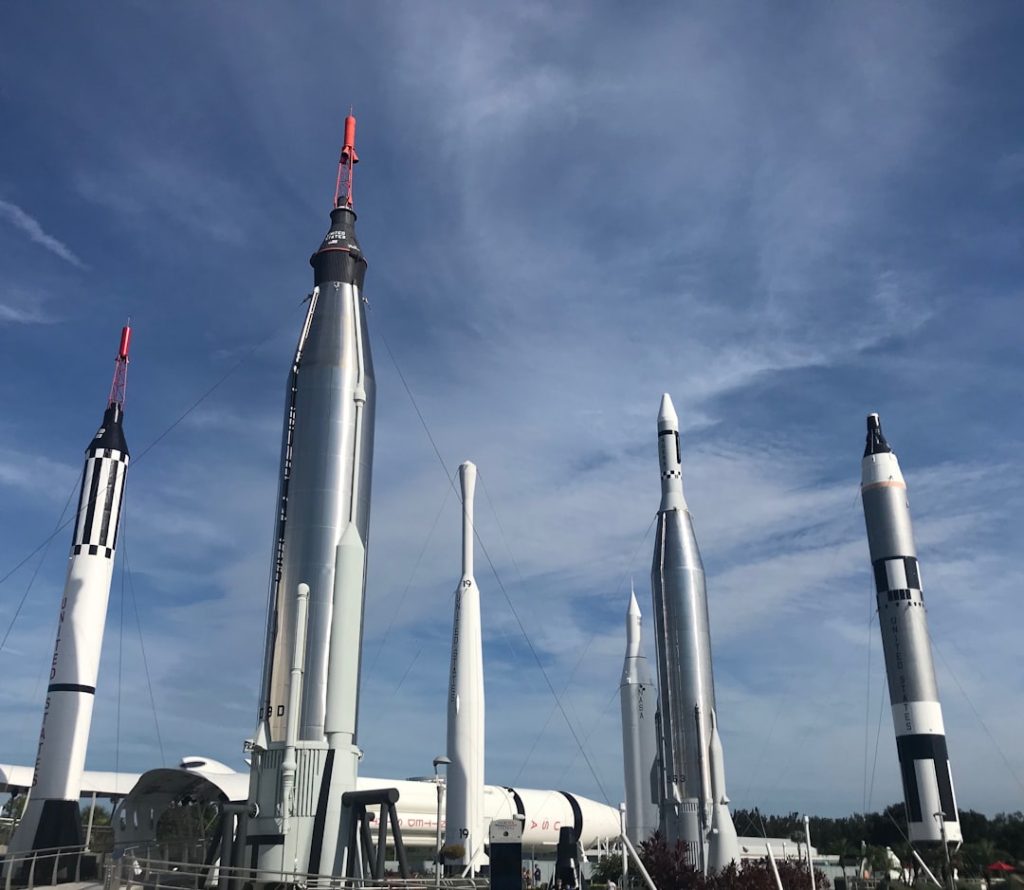The Space Launch System (SLS) represents a significant leap forward in humanity’s quest to explore the cosmos. Developed by NASA, this powerful rocket is designed to carry astronauts and cargo beyond low Earth orbit, paving the way for missions to the Moon, Mars, and potentially beyond. The SLS is not merely a vehicle; it embodies a vision for the future of space exploration, integrating advanced technology with a commitment to safety and reliability.
As the backbone of NASA’s Artemis program, the SLS aims to return humans to the lunar surface and establish a sustainable presence there, serving as a stepping stone for future interplanetary missions. The SLS is characterized by its immense power and versatility. Standing at over 322 feet tall, it is one of the most powerful rockets ever built, capable of lifting heavy payloads into space.
This capability is crucial for ambitious missions that require significant amounts of equipment and supplies. The SLS is designed to evolve over time, with configurations that can adapt to various mission profiles, whether they involve crewed flights or uncrewed cargo deliveries. This adaptability ensures that the SLS will remain relevant as space exploration goals evolve, making it a cornerstone of NASA’s long-term strategy.
Key Takeaways
- The Space Launch System (SLS) is a powerful rocket designed for deep space missions, including human exploration of Mars.
- Space launch systems have evolved from early rockets like the V-2 to the Saturn V and the Space Shuttle, leading to the development of the SLS.
- The SLS incorporates advanced technologies such as the RS-25 engines and solid rocket boosters to achieve unprecedented lift capability.
- The SLS is crucial for future space exploration, enabling missions beyond low Earth orbit and laying the groundwork for human settlement on other planets.
- Developing and operating the SLS presents challenges such as cost, technical complexity, and ensuring safety, but the potential benefits for scientific research and space tourism are significant.
The History of Space Launch Systems
The concept of space launch systems has evolved significantly since the dawn of the space age in the late 1950s. Early rockets, such as the Redstone and Atlas, were primarily designed for military purposes and later adapted for space exploration. The Apollo program in the 1960s showcased the capabilities of launch systems with the Saturn V rocket, which successfully transported astronauts to the Moon.
However, after the Apollo program concluded, there was a shift in focus towards reusable launch systems, exemplified by the Space Shuttle program, which operated from 1981 to 2011. The transition from the Space Shuttle to the SLS was driven by a need for a new generation of launch vehicles capable of supporting deep space missions. In 2010, NASA announced the development of the SLS as part of its broader strategy to return humans to the Moon and eventually send them to Mars.
The decision was influenced by lessons learned from previous programs and an understanding that future missions would require more powerful and reliable rockets than those available at the time. The SLS was envisioned as a heavy-lift vehicle that could carry larger payloads than any existing rocket, thus enabling more ambitious exploration goals.
The Technology Behind the Space Launch System

At the heart of the Space Launch System’s design is its advanced technology, which combines proven components with innovative engineering solutions. The core stage of the SLS is powered by four RS-25 engines, which were originally developed for the Space Shuttle program. These engines are known for their reliability and efficiency, providing the necessary thrust to propel the rocket through its initial ascent phase.
The use of these engines not only leverages existing technology but also reduces development costs and risks associated with new engine designs. In addition to its powerful engines, the SLS features solid rocket boosters (SRBs) that provide additional thrust during liftoff. These boosters are derived from those used in the Space Shuttle program but have been enhanced for greater performance.
The combination of liquid-fueled engines and solid rocket boosters allows the SLS to achieve an impressive lift capacity, capable of carrying payloads exceeding 200 metric tons to low Earth orbit. Furthermore, the rocket’s modular design enables it to be configured for different mission profiles, allowing NASA to adapt its capabilities based on specific mission requirements.
The Importance of the Space Launch System for Future Space Exploration
| Metrics | Data |
|---|---|
| Payload Capacity | Up to 130 metric tons to low Earth orbit |
| Exploration Capabilities | Enables human and robotic exploration beyond low Earth orbit |
| International Collaboration | Facilitates collaboration with international space agencies |
| Scientific Research | Supports scientific missions to study the universe and our solar system |
| Economic Impact | Creates jobs and drives innovation in the space industry |
The Space Launch System is pivotal for advancing human exploration beyond Earth’s orbit. Its primary mission is to support NASA’s Artemis program, which aims to return astronauts to the Moon by 2024 and establish a sustainable human presence there by the end of the decade. This lunar exploration is not merely about returning to where humans have been before; it is about laying the groundwork for future missions to Mars and beyond.
The SLS will enable NASA to transport essential equipment, scientific instruments, and crew members necessary for establishing lunar bases and conducting extensive research on the Moon’s surface. Moreover, the SLS serves as a critical enabler for international collaboration in space exploration. By providing a reliable means of transportation for astronauts and cargo, it opens up opportunities for partnerships with other space agencies and private companies.
For instance, international collaborations could involve shared missions to lunar bases or joint scientific research initiatives on Mars. The SLS’s capabilities can facilitate these partnerships by ensuring that all participating entities have access to a robust launch vehicle capable of meeting their needs.
The Challenges of Developing and Operating the Space Launch System
Despite its promise, developing and operating the Space Launch System has not been without challenges. One significant hurdle has been managing costs and timelines. The SLS program has faced budget overruns and delays due to various factors, including technical difficulties and changes in project scope.
These challenges have raised concerns about whether NASA can deliver on its ambitious schedule for lunar exploration while staying within budget constraints. Another challenge lies in ensuring safety and reliability in an era where public scrutiny is high. The SLS must meet rigorous safety standards to protect astronauts during their missions.
This involves extensive testing and validation processes that can be time-consuming and costly. Additionally, as new technologies are integrated into the SLS design, engineers must carefully assess potential risks associated with these innovations. Balancing innovation with safety is a delicate task that requires constant vigilance and adaptation throughout the development process.
The Potential Impact of the Space Launch System on Scientific Research and Space Tourism

The implications of the Space Launch System extend beyond governmental space exploration initiatives; it also holds significant potential for scientific research and commercial endeavors such as space tourism. With its ability to transport large payloads into deep space, the SLS can facilitate ambitious scientific missions that require substantial equipment or multiple instruments. For example, future missions could deploy sophisticated telescopes or landers designed to study asteroids or distant planets, enhancing our understanding of the solar system.
In addition to scientific research, the SLS could play a crucial role in advancing space tourism. As private companies develop plans for commercial space travel, having a reliable launch vehicle like the SLS could provide opportunities for wealthy individuals or researchers to experience space firsthand. This could lead to a burgeoning industry focused on space tourism, where people can participate in suborbital flights or even lunar excursions.
The infrastructure developed around the SLS could support these commercial ventures, creating new economic opportunities in aerospace and related fields.
Collaboration and International Partnerships in the Development of the Space Launch System
Collaboration has been a cornerstone of NASA’s approach to developing the Space Launch System. Recognizing that no single entity possesses all the expertise required for such an ambitious project, NASA has engaged with various partners across government agencies, private industry, and international organizations. This collaborative spirit has led to shared resources and knowledge that enhance the overall capabilities of the SLS program.
International partnerships are particularly vital as they allow for shared investment in technology development and mission planning. For instance, NASA has worked closely with European Space Agency (ESA) partners on elements such as the Orion spacecraft’s service module, which provides essential support functions during crewed missions. Such collaborations not only reduce costs but also foster goodwill among nations as they work together toward common goals in space exploration.
The Future of Space Exploration with the Space Launch System
Looking ahead, the Space Launch System is poised to play a transformative role in shaping humanity’s future in space exploration. As NASA embarks on its Artemis missions, it will not only return humans to the Moon but also establish a framework for sustainable exploration that can be applied to Mars missions in subsequent decades. The lessons learned from lunar exploration will inform strategies for tackling challenges associated with longer-duration missions beyond Earth’s orbit.
Moreover, as technology continues to advance, future iterations of the SLS may incorporate even more innovative features that enhance its capabilities further. This could include advancements in propulsion systems or improvements in payload capacity that allow for more ambitious missions than previously imagined. As commercial partnerships grow and international collaborations deepen, we may witness an era where human presence on other celestial bodies becomes commonplace rather than extraordinary.
In summary, while challenges remain in developing and operating this monumental rocket system, its potential impact on scientific research, international collaboration, and commercial endeavors cannot be overstated. The Space Launch System stands as a testament to human ingenuity and determination in our quest to explore the final frontier.


